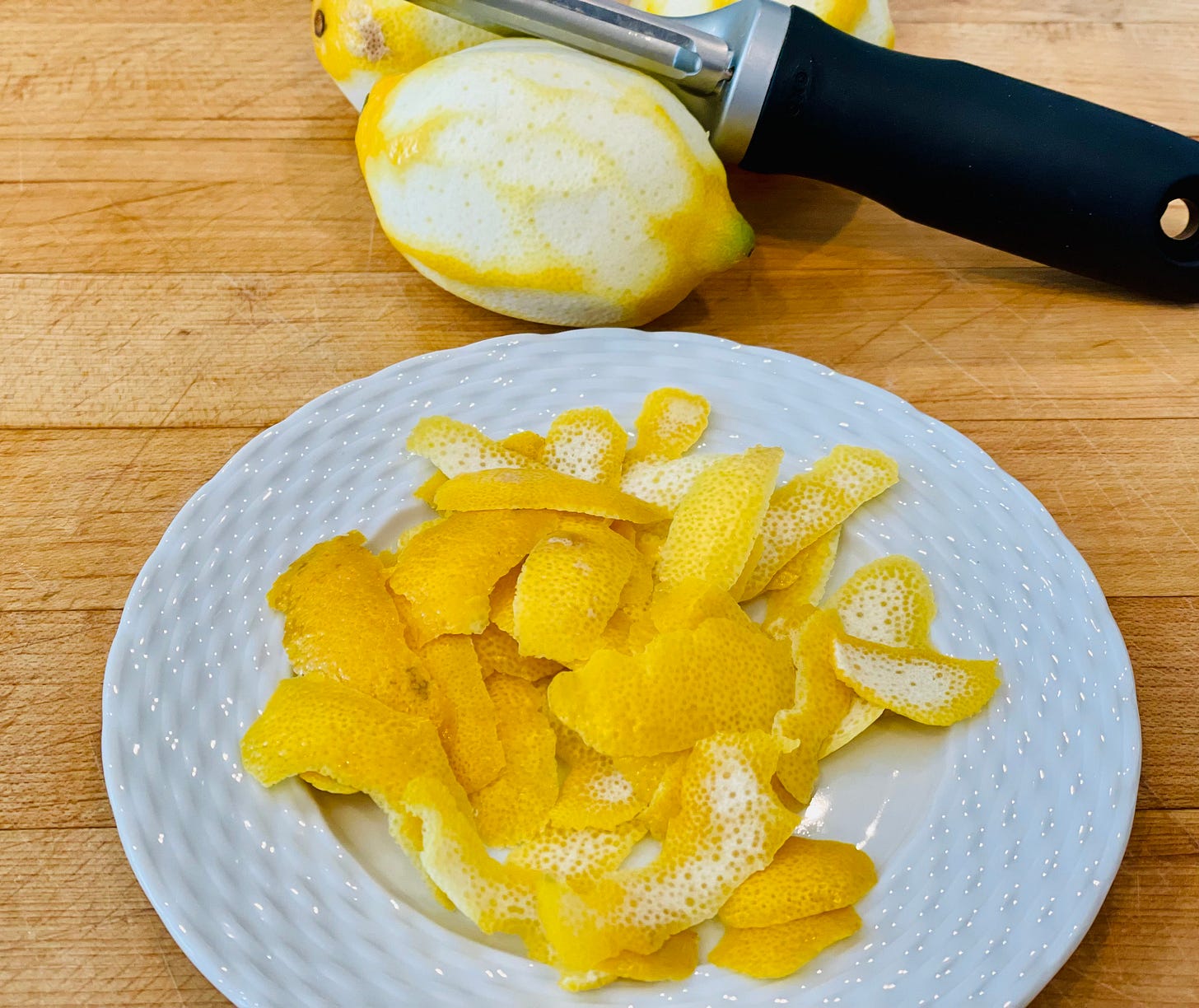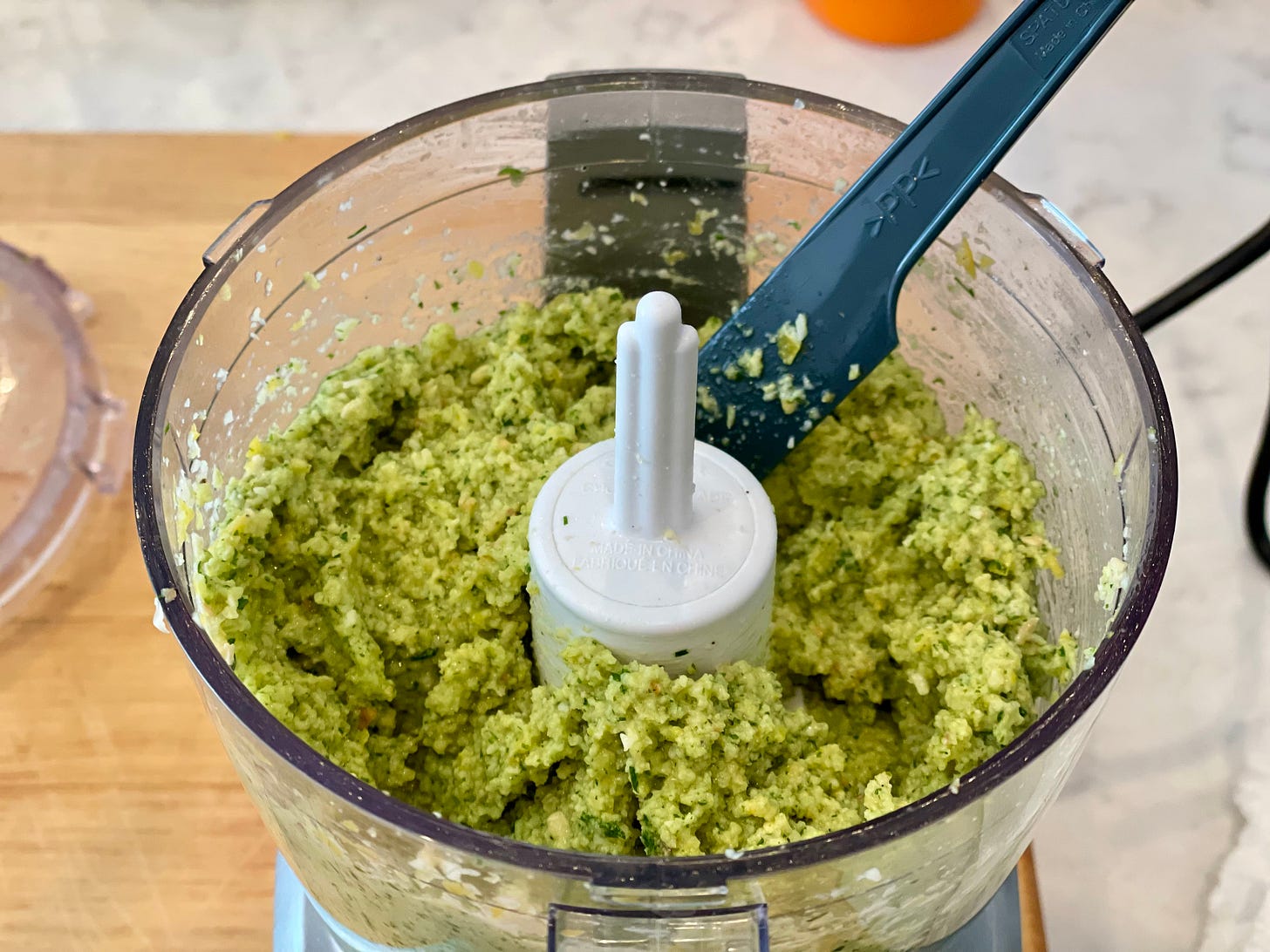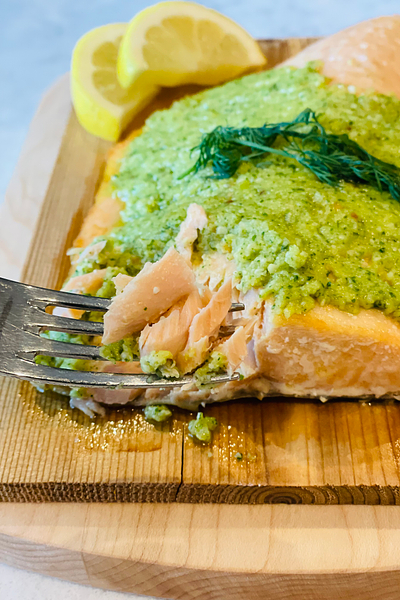AN EASY YET SO-FISH-TICATED DISH
Brighten up the cold, dark days of Winter with a healthy and punchy pesto.
Happy Thursdee! This week Elizabeth is tackling an easy weeknight dinner without the need for a tackle box of ingredients. Her Cedar Plank Salmon with Lemon Pesto is an easy, yet so-fish-ticated tasting dish that can be made in your oven without the need to thaw the fish! We think it’s quite the catch…
CEDAR PLANK SALMON WITH LEMON PESTO
EK: I always start the year off vowing to eat more seafood. Now, don’t get me wrong, I love seafood but I tend to eat it out at restaurants more than I make it at home because it is difficult to find really fresh fish in the grocery store—especially wild fish.
AU: Honestly, same! I also feel like, unless you have a really skilled fish monger nearby (who moves a lot of inventory daily), the seafood you get in a restaurant is probably much higher quality than what you have access to in your typical supermarket.
EK: This time of year, especially, many people are looking to eat more seafood/fish and salmon is a popular choice. Luckily, there are some great frozen options for wild seafood and salmon in particular.
I have friends who complain that salmon is “too fishy,” but I find that if you cook wild salmon, the flavor is better and it is not “fishy” at all. I also prefer to buy frozen salmon and cook it from frozen or thaw it myself to make sure it is as fresh as possible.
AU: PREACH THAT GOSPEL, EK! Buying FROZEN seafood at the grocery store is almost always going to be better, because the dirty little secret about your supermarket’s fish counter is that it all arrived to the store frozen, and they’ve just thawed it for display. Thaw it yourself at home, so it’s guaranteed to be fresher (and less likely to have been sitting on a bed of curly parsley for a few days!).
EK: You are sooooo right!! That “fresh” seafood case is really freshly thawed!
If you’re looking for wild seafood, your best bet is seafood from Alaska. I recently learned that all seafood from Alaska is wild, which means that if it says Alaska, you can feel confident that you are buying wild seafood.
Alaska is the nation’s largest source of domestic wild caught seafood, and nearly 60% of all wild seafood harvested in the US comes from their icy cold waters. What that means when you are shopping is that about 99% of the wild salmon you see at retail comes from Alaska—the majority of wild cod and wild halibut is also harvested there.
Once you have decided on salmon, you have five popular species of wild salmon to choose from. They are all available frozen year-round, and while it’s in season, you can find it at specialty markets fresh:
Sockeye - deep red, firm texture
Coho - orange-red, firm texture (last time I was at Trader Joe’s they had trimmed skinless fillets of both Sockeye & Coho!)
Keta - Sometimes sold as “chum” is light pink in color, lean, and delicate in flavor
Alaska King Salmon - Also known as “Chinook” salmon. Due to the high fat content, this is the richest and most succulent tasting of the four.
Alaska Pink Salmon - The most abundant and affordable of the five species with a rosy, pink-colored flesh. It’s known for its delicate flavor and tender texture and is often available canned but also great for smoking.

EK: All will work well in my recipe for Indoor Cedar Plank Salmon with Lemon Pesto. I had Keta salmon in the freezer, and that’s what I used. It is also why the color in the photograph is much lighter than you expect from other varieties of salmon.
The inspiration for my recipe came from Alaskan Chef Nathan Bentley. Chef Nathan is the chef-owner of Altura Bistro in Anchorage, Alaska. The restaurant showcases the flavors of ‘the last frontier‘ state and pays homage to the region’s culinary heritage by incorporating local sourced ingredients including salmon.
When I asked him how he would prepare salmon during the winter, he immediately said, “with a lemon pesto.” I thought that sounded so bright and fresh— perfect for a January dinner when you are looking for something on the healthier side but still want it to taste as delicious as it possibly can.
EK: I had never made lemon pesto before and immediately, I had visions of a chunky lemon-spiked pesto filled with lemon zest and tempered with Pecorino-Romano cheese, toasted slivered almonds and pine nuts, accented by fresh garlic, and a handful of curly parsley and fresh dill. For fun, I added a pinch of Aleppo pepper, but if you don’t like any heat with your spice, you could just use white pepper.

EK: Even though I planned to cook it indoors, I wanted it to be as simple and as tasty as grilling it outside. It didn’t take long for me to decide to cook it on a cedar plank because it is an easy way to cook fish and it makes a dynamite presentation.
Once the pesto is made—and you can make it up to four or five days in advance—all you need to do is soak the wood plank, and brush the top of your salmon with olive oil and season it with salt.
EK: The hardest part of the pesto recipe is removing the fragrant zest off the lemon. I prefer either seedless lemons or Meyer lemons for this recipe, because the rind of the lemon is really what carries the flavor. The easiest way to do this is with a really sharp vegetable peeler. You slice the rind off in strips, being careful to get as little of the bitter white pith under the yellow rind as possible. I am partial to the original OXO swivel peeler for this job. You can do it with a Y-peeler but it is more difficult.
EK: Once you have the zest and juice of one lemon, you process it with the nuts, garlic, cheese, parsley, dill, and olive oil. Make sure that your lemon gives you about ¼ cup of juice; too much juice will make the pesto too soupy/saucy. And, a food processor is better than a blender for this pesto because you want it chunky and not as smooth as a “smoothie.” I use a mini 4-cup food processor and it works perfectly.
The great thing about this recipe, as opposed to pan cooking it, is that you can cook it from frozen. I really like the convenience of being able to cook the fish from frozen because that means that I don’t have to remember to take it out of the freezer and put it in my refrigerator to thaw before I cook it.
I baked my salmon from frozen because I bought it frozen. If you buy your salmon fresh or already thawed, you will do the same thing, but it will take less time to cook.










I’d never thought of making a lemon pesto. Sounds like it would be perfect with salmon or any fish. I also like the idea of adding it to pasta. Thanks!
What adjustments should I make to the recipe if I don’t have a cedar plank?